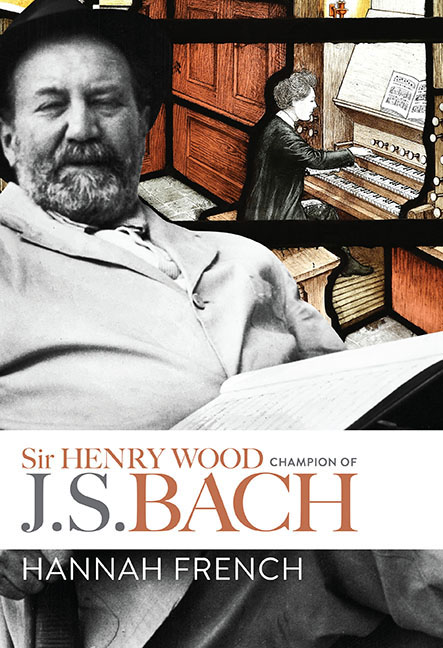Book contents
- Frontmatter
- Dedication
- Contents
- List of Illustrations
- List of Music Examples
- List of Tables
- Prologue
- Acknowledgements
- List of Abbreviations
- PART I CONTEXTUALISING
- PART II PROGRAMMING
- 2 Wood's Encounter with Bach
- 3 Orchestral Bach at the Proms
- 4 Wood's Bach Players
- PART III INTERPRETING: ORCHESTRAL WORKS
- PART IV INTERPRETING: VOCAL WORKS
- PART V INFLUENCING
- APPENDICES
- Bibliography
- General Index
- Index of Works by J.S. Bach
4 - Wood's Bach Players
from PART II - PROGRAMMING
Published online by Cambridge University Press: 07 September 2019
- Frontmatter
- Dedication
- Contents
- List of Illustrations
- List of Music Examples
- List of Tables
- Prologue
- Acknowledgements
- List of Abbreviations
- PART I CONTEXTUALISING
- PART II PROGRAMMING
- 2 Wood's Encounter with Bach
- 3 Orchestral Bach at the Proms
- 4 Wood's Bach Players
- PART III INTERPRETING: ORCHESTRAL WORKS
- PART IV INTERPRETING: VOCAL WORKS
- PART V INFLUENCING
- APPENDICES
- Bibliography
- General Index
- Index of Works by J.S. Bach
Summary
Those first days at the Queen's Hall Orchestra represented for me a period of isolation from the prevalent style of sound reproduction.
(Léon Goossens)HENRY Wood's success in popularising Bach's Brandenburg Concertos and orchestral suites at the Proms relied heavily on the talents of his soloists. The most striking feature of a statistical analysis of the musicians engaged (Appendix E) is how frequently Wood turned to his orchestral players to step out for these performances. The initial engagement of a single orchestra for the whole the season promoted this further, but even when orchestras changed, Wood often returned to the same soloists. Although Wood developed his interpretations and approaches to the repertoire over time, the annual intense collaboration with his players offered the opportunity to create a defined ‘Proms Bach’ sound, and ultimately led to his success in reviving and popularising Bach's orchestral music in England.
Identification of the solo violinists immediately distinguishes the Brandenburg Concertos and orchestral suites from other solo and ensemble Bach concertos performed at the Proms. The violinists who performed the solos in Brandenburg Concertos Nos. 2, 4, and 5 were the leaders of Wood's orchestras. Arthur W. Payne (1898), Henri Verbrugghen (1904–08), and Arthur Catterall (1909–14) led the QHO, before Arthur Beckwith (1915–19) led the newly named ‘New’ Queen's Hall Orchestra. Charles Woodhouse (1920–33) began as leader of the latter and led during the transition of the ensemble under the management of the BBC, when it was known for a couple of years as ‘Sir Henry J. Wood and his Symphony Orchestra’, before continuing his leadership of the BBCSO. Marie Wilson (1934–36) and Paul Beard (1937–40) succeeded Woodhouse, and after that multiple orchestras were employed each season. Depending upon the orchestra used, George Stratton (LSO), Paul Beard (BBCSO), Marie Wilson (BBCSO), and Jean Pougnet (LPO) led between 1941 and 1944.
The first leader, Arthur Payne, played in the first Proms performance of Brandenburg Concerto No. 2 in 1898, and this was his only solo Bach performance. Verbrugghen, Catterall, and Beckwith each performed one of the solo parts in the Concerto in D minor for two violins (BWV 1043), but despite performing many other concertos (e.g. Bruch, Sibelius, Beethoven, Dvořák, Mendelssohn, Vieuxtemps, Wieniawski, Brahms, Tchaikovsky, Mozart, or Goldmark) did not play any of the Bach solo violin concertos.
- Type
- Chapter
- Information
- Sir Henry Wood: Champion of J. S. Bach , pp. 57 - 68Publisher: Boydell & BrewerPrint publication year: 2019

